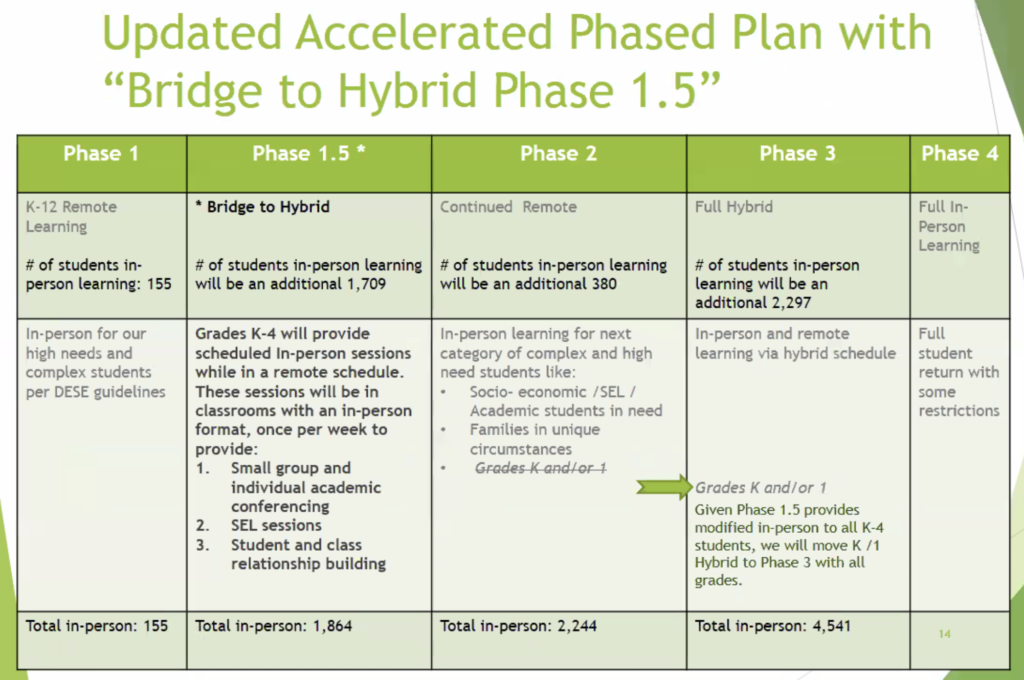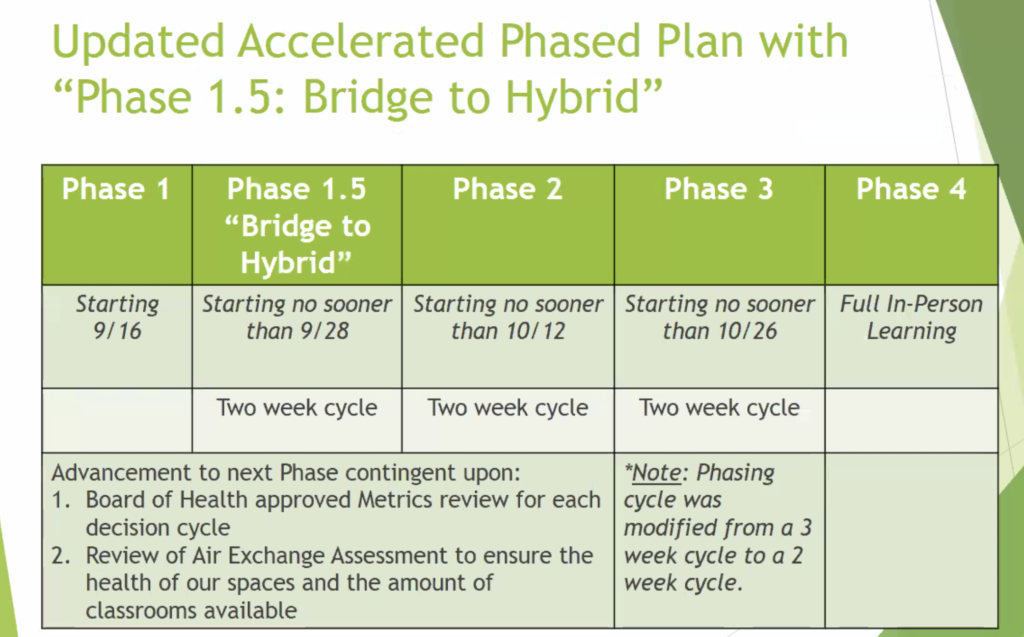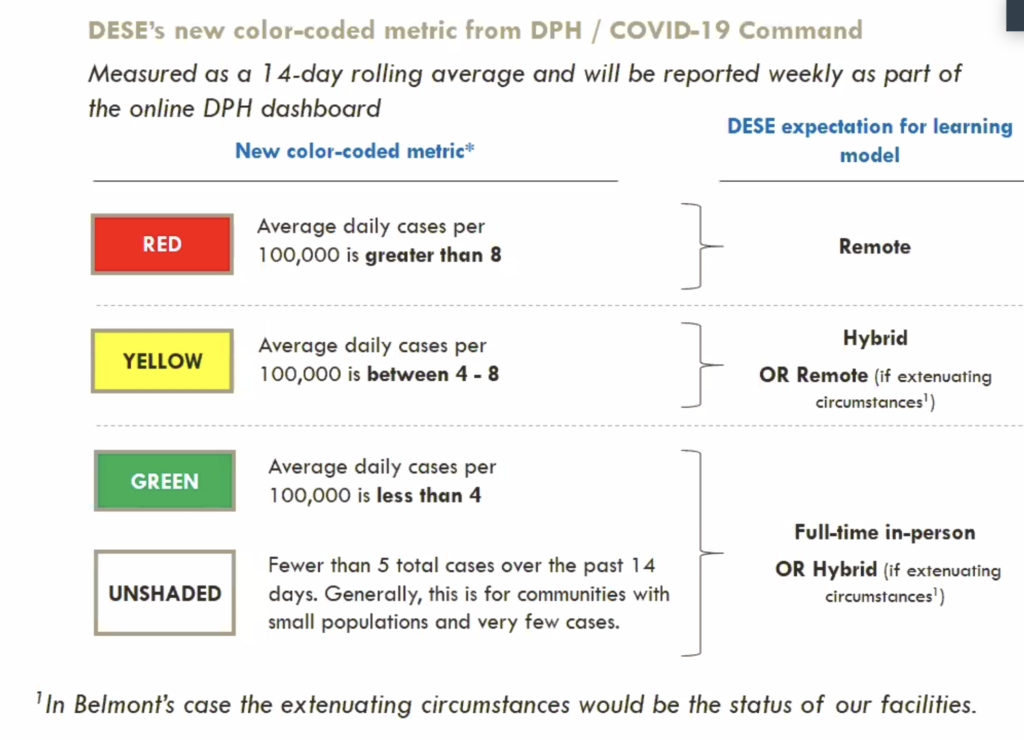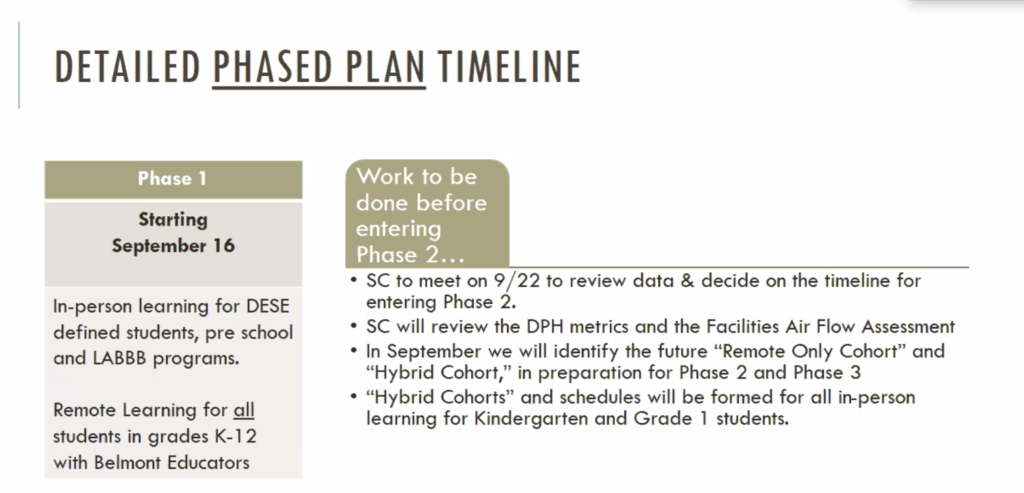Photo: An update for the hybrid phase.
Saying they heard the concerns of parents, the Belmont School District has moved up by nearly a month the earliest date district schools can begin the hybrid phase.
In an update to the district’s “Return-to-Learning Fall 2020” blueprint during the Belmont School Committee meeting on Sept. 3., the district has added an additional 5th phase – dubbed 1.5 – as “a bridge to hybid” to allow “our youngest learners to meet with the peer … and to get time with their teachers,” explained John Phelan, superintendent of Belmont schools.
Phelan told the committee the most asked questions from parents was “Can we get to the hybrid phase sooner?” The guardians of elementary students also spoke urgently on the need for younger pupils “to be with their teachers.” Phelan said that the inclusion of the new phase will accomplish both goals.

In the new phase (squeezed in-between remote phases 1 and 2), approximately 1,900 Kindergarten to fourth-grade students will be divided into two groups – or cohorts – and each will meet their teachers and fellow students for two hours on a Tuesday and Thursday.
With Phase 1.5, “we could get students in quicker” into the hybrid phase, said Phelan, as the K-4 students will have had modified in-person learning and will allow all students to move into Phase 3.
Under this new guideline, the transition time between the phases will be shortened from three weeks to two and cutting two weeks from the previous “earliest” hybrid starting date of Nov. 9 to now Oct. 26.

But as Phelan has stated previous, any change between phases will depend on a pair of metrics that the School Committee agreed to last week.
Phelan said of the pair of metrics the district will use to determine when to move between phases, “we can check off” the Department of Elementary and Secondary Education’s recorded two-week community infection rate that is currently registering below 1 percent in Belmont which places the community in the “green” zone which allows for a move between phases.
The second benchmark, the air exchange study, is currently underway and the results will be released at the end of the coming week on Sept. 11. and go before the school committee for review the next week.
Also during the meeting, the principals from the elementary, middle school and high schools introduced the hybrid learning plans for their schools.

